LensRentals has loaned me a Nikon 58 mm f/0.95 Noct for testing. For the past couple of weeks, I’ve been reporting on the individual tests that I’ve been doing. The lens needs to go back soon, so it’s time for me organize my thoughts.
This is an outstanding lens. I’ve worked with f/0.95 lenses before, ande they’ve all been severely optically compromised. You can’t say that about the Noct. It’s sharp across the frame wide open, and amazingly so stopped down to f/1.4. It has few aberrations by any standard, and amazingly few for such a fast lens. It focuses down to half a meter. The bokeh is close to perfect.
What’s not to like?
The price, for starters. At eight thousand bucks, it’s out of the impulse buy territory and into the don’t-tell-your-spouse-how-much-the-darned-thing-cost region.
Then there’s the size and weight. It tips the scale at an even two kilograms, or 4.4 pounds. It’s four inches in diameter and six inches long. It takes an 82mm filter. When you’re handholding it, it feels like a fast medium telephoto, but it’s not much longer than a normal 50mm full frame lens. It has a hefty tripod collar, and you’re going to need it.
F0r some people, the capper will be that there’s no autofocus. It’s got a focusing ring with almost a 360-degree throw, which is nice, but the depth of field (DOF) at f/0.95 is so shallow that the ring feels twitchy sometimes.
It’s a statement lens. It shows what Nikon can do when they put their minds to it, and it shows what the Z mount can allow lens designers to do. Like the recently teased 1000+ horsepower Corvette ZR-1, it is intended by its manufacturer to make people feel good when they buy lesser products. That doesn’t make it useless in and of itself, but the space inside the optimal usage envelope is cramped. You can kill flies with a 9-pound sledge, and you can take family snaps with the Noct, but who would want to do that?
Sharpness
Here’s a 250%-magnification crop of an on-axis Siemens star 25 feet away with the lens wide open on a Nikon Z7 body, developed in Lightroom with sharpening set to zero:
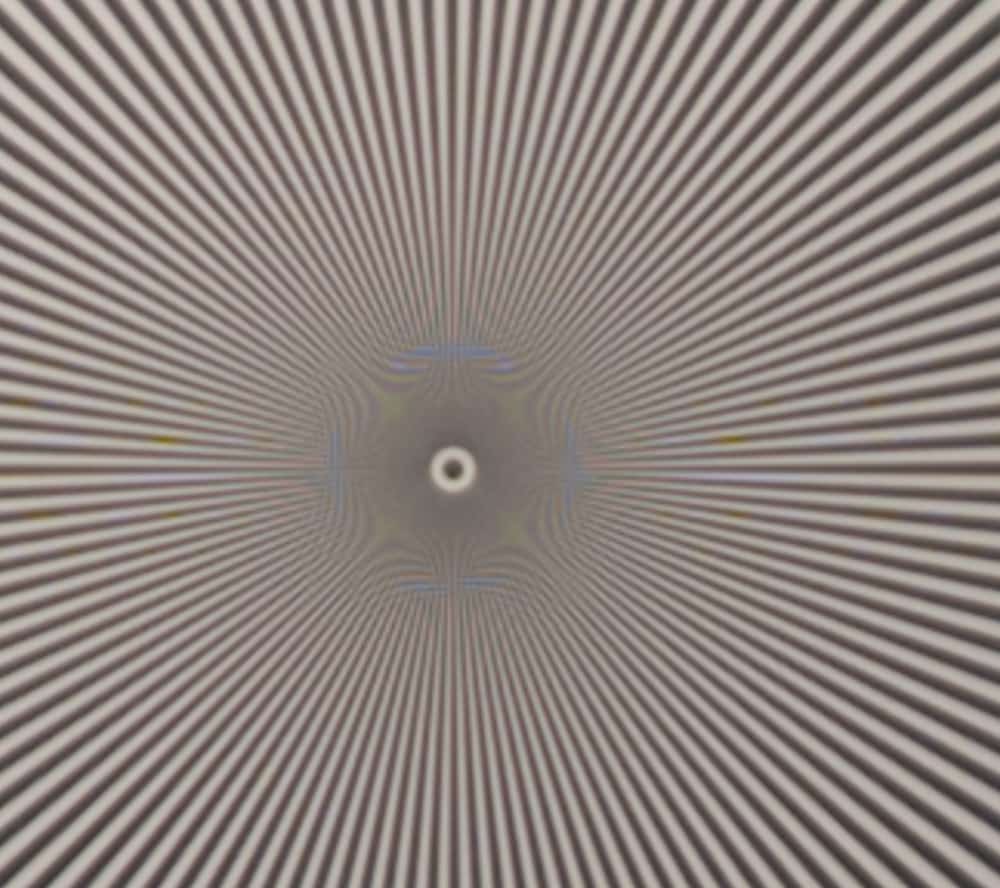
The lens is laying down fairly high contrast detail at frequencies well above those that the sensor can properly resolve.
Stopping down to f/1.4 makes things even crisper:
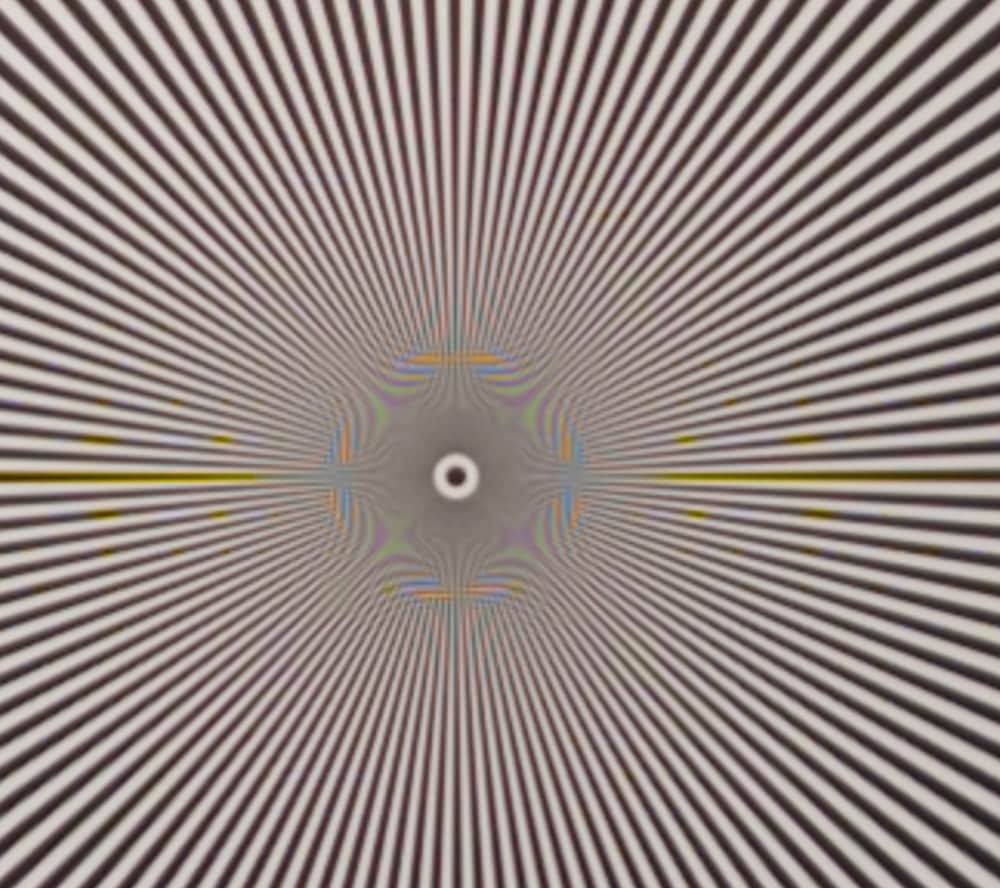
It looks to me like this lens could do fine on a 200+ megapixel sensor!
The lens retains about this level of sharpness until f/5.6, where diffraction cuts into its ability to render detail. The lens is still very sharp at f/5.6, though.
In the corner, wide open:
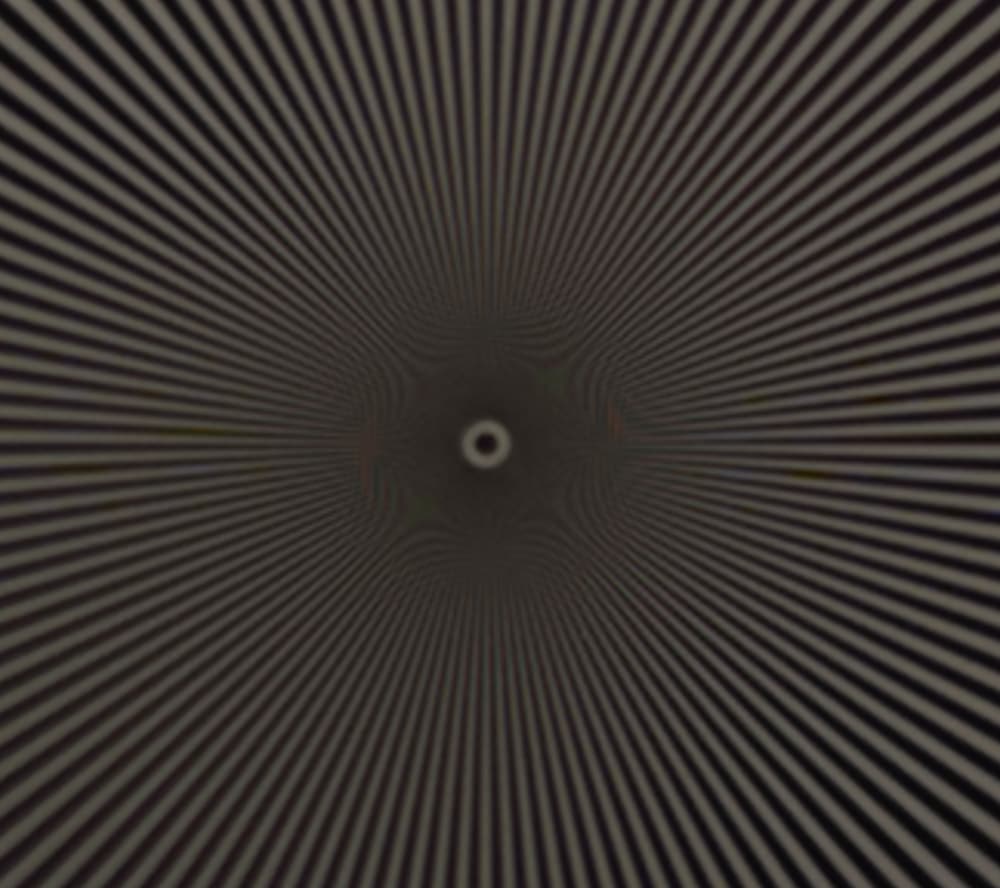
There’s quite a bit of illumination falloff, but once more, the corners are unbelievably sharp. And note from the above that radial and tangential sharpness appear to be about the same. This is a striking accomplishment on a lens this fast.
At f/1.4 in the corner:
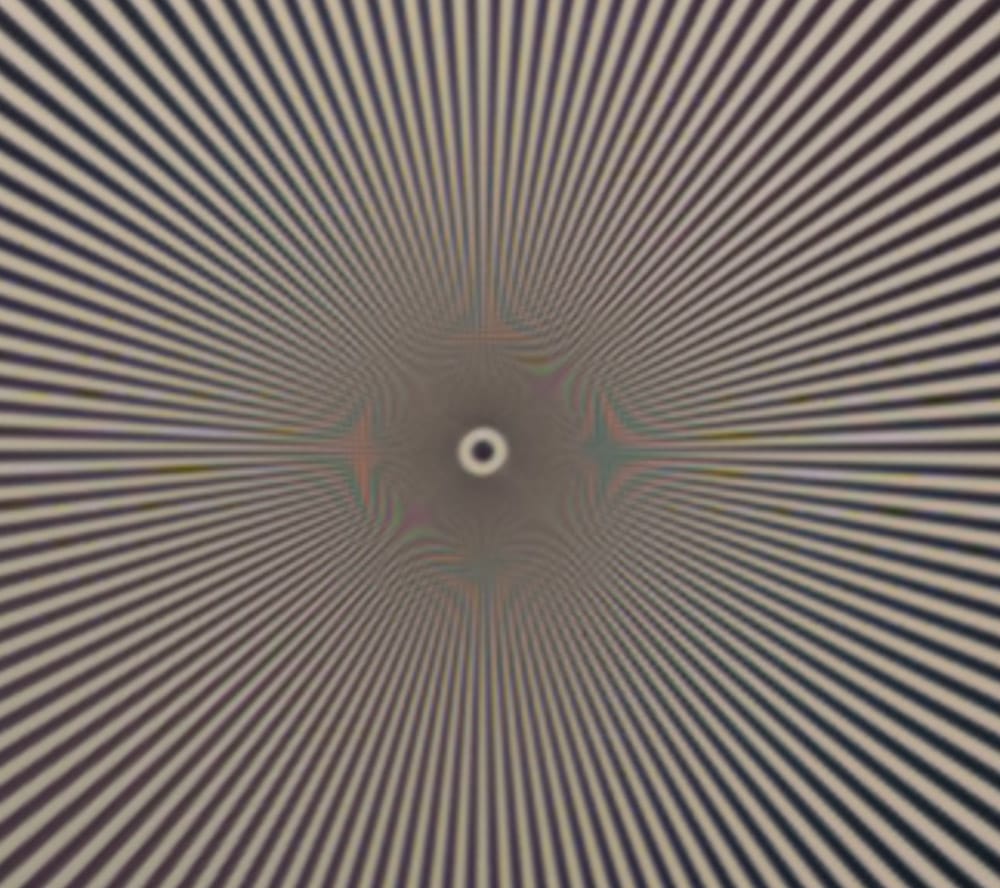
Even better, and less illumination falloff.
Corner sharpness improves slowly as the lens is stopped down further, reaching its greatest sharpness at f/4 or f/5.6.
Illumination falloff
Since illumination falloff has come up, I’ll report on it next. Here’s what it looks like wide open as developed in Lightroom with default settings:
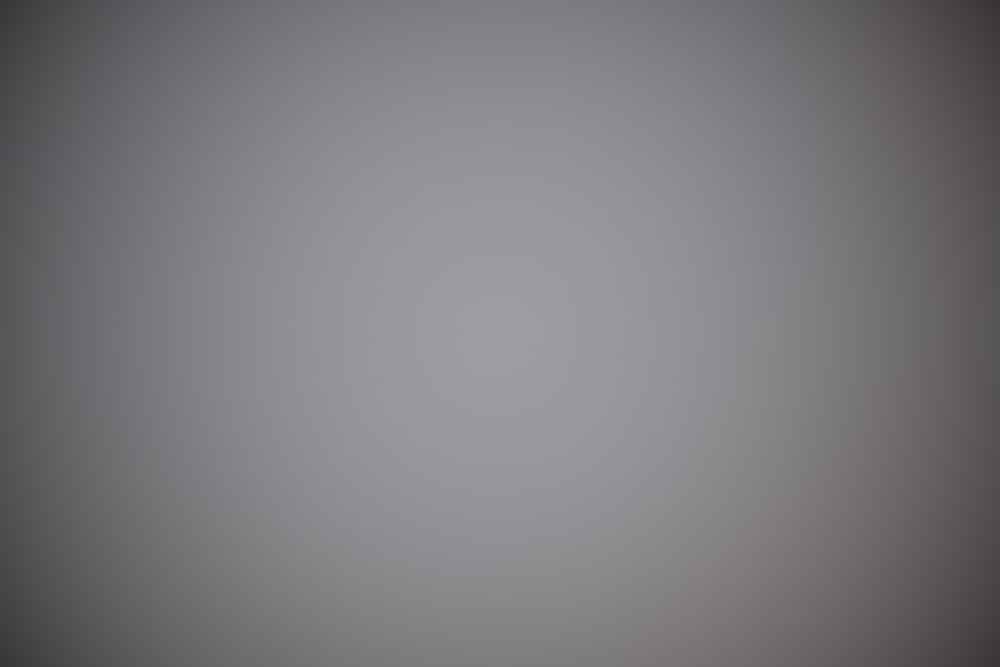
It gets better as you stop down:
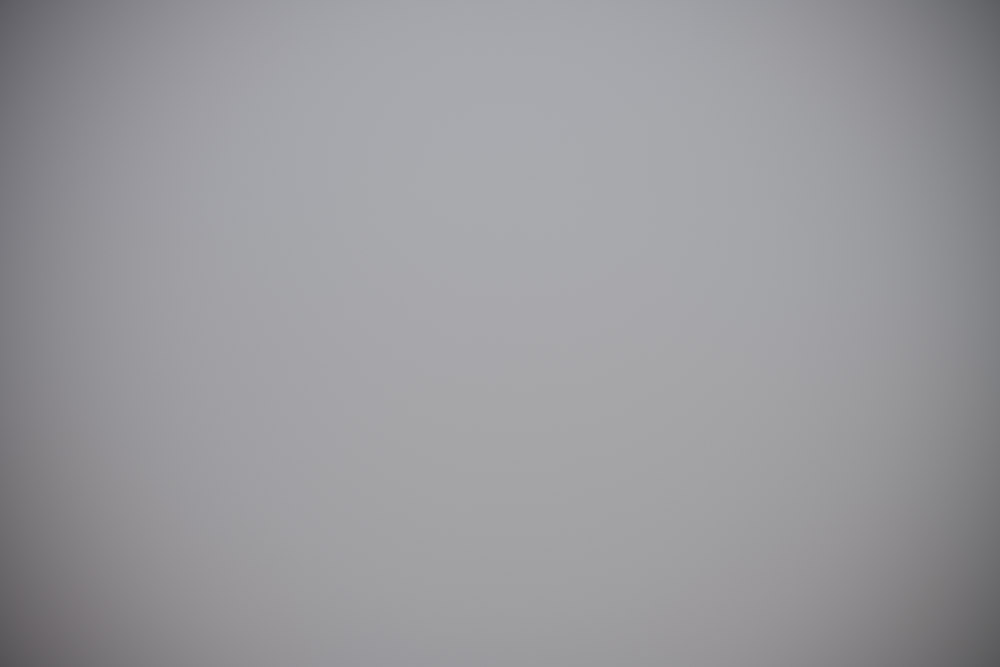
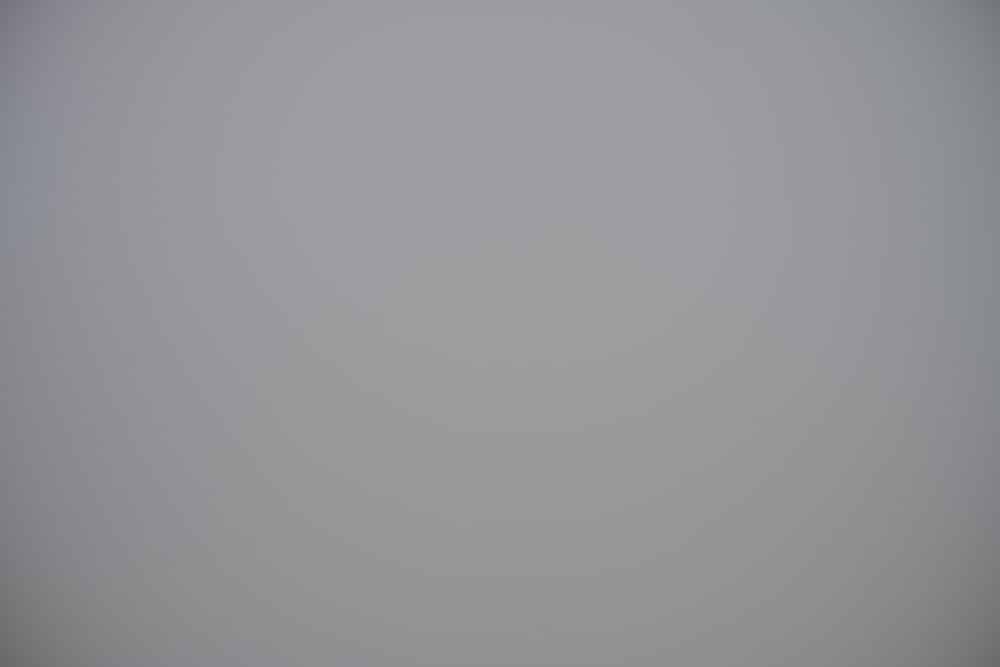
I examined the raw files, and found that the illumination falloff from center to corner at f/0.95 is one stop. For f/1.4, it’s 0.78 stops. For f/2, the falloff is 0.44 stops. When the illumination is corrected for exposure, on axis at f/0.95 the illumination is a third of a stop less than you’d expect it to be from looking at the f/2 image.
Focus curvature
Focus curvature is excellent, as shown in this wide-open shot using Roger Cicala’s quick focus curvature test:
The green behind the main plane of focus and magenta in front of it indicates a bit of longitudinal chromatic aberration (LoCA), but it’s not bad at all.
Bokeh
If you’re using a lens like this anywhere near wide open, the bokeh is going to be important to you most of the time, because probably much of the image is going to be out of focus. One way to get a good handle on the far out of focus bokeh is to image a defocused point source at various places in the frame.
Here is a set of three images composited with the lens wide open using the mechanical shutter.
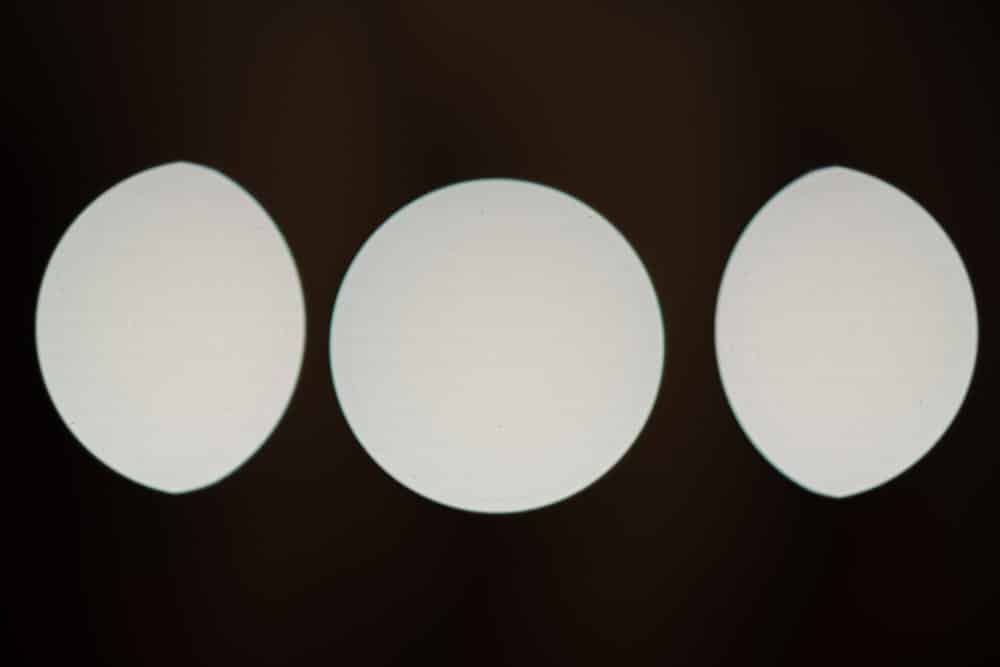
And here are six more composited images wide open:
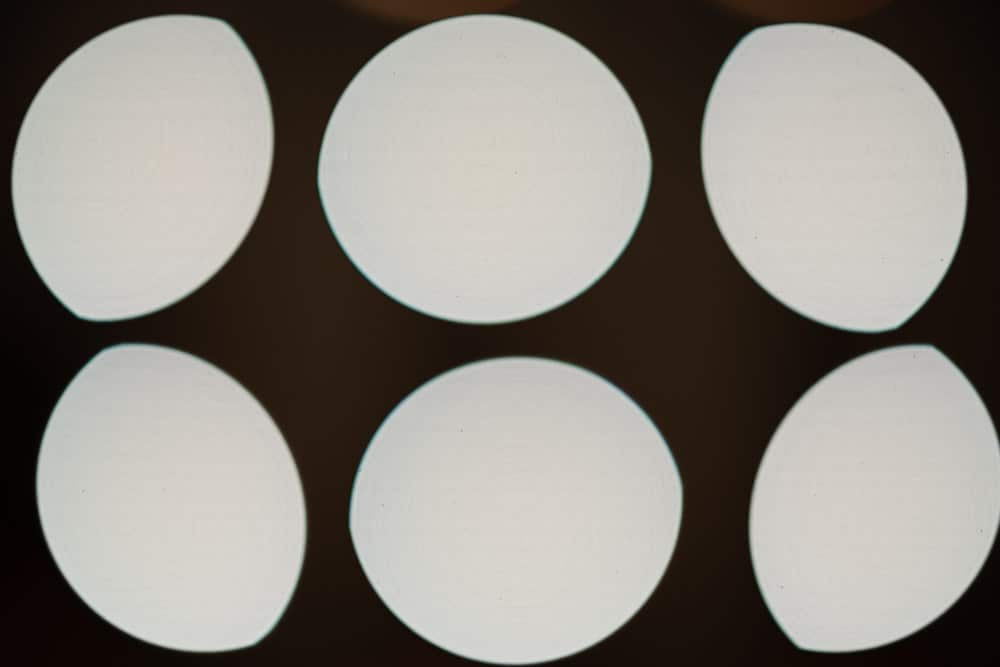
You can see that there is some mechanical vignetting at the edges and corners, but remarkably little vignetting for such a fast lens.
If we stop down to f/1.4, the mechanical vignetting virtually disappears:
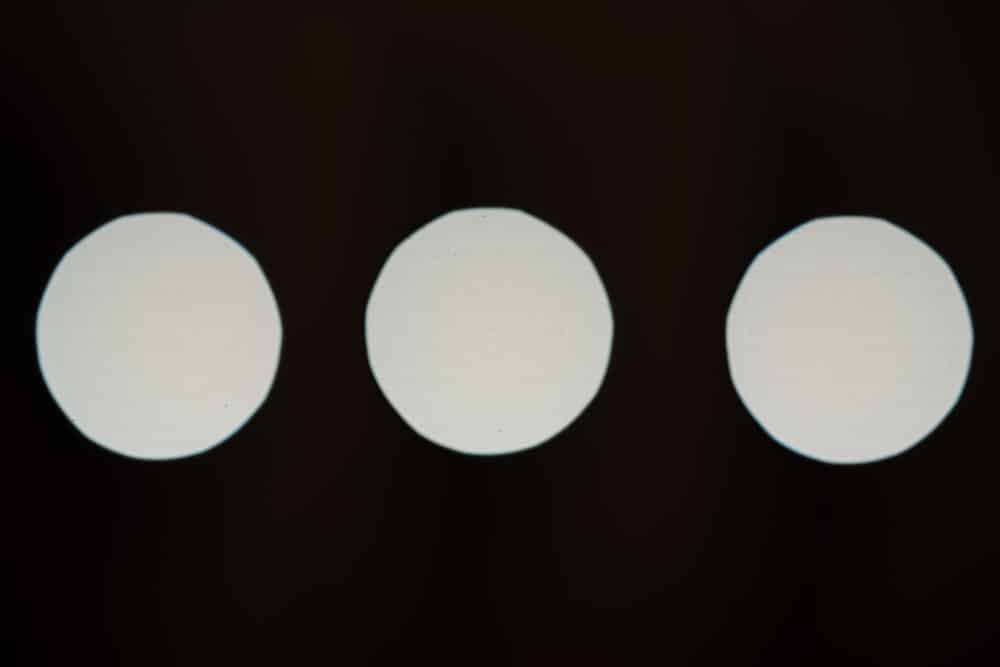
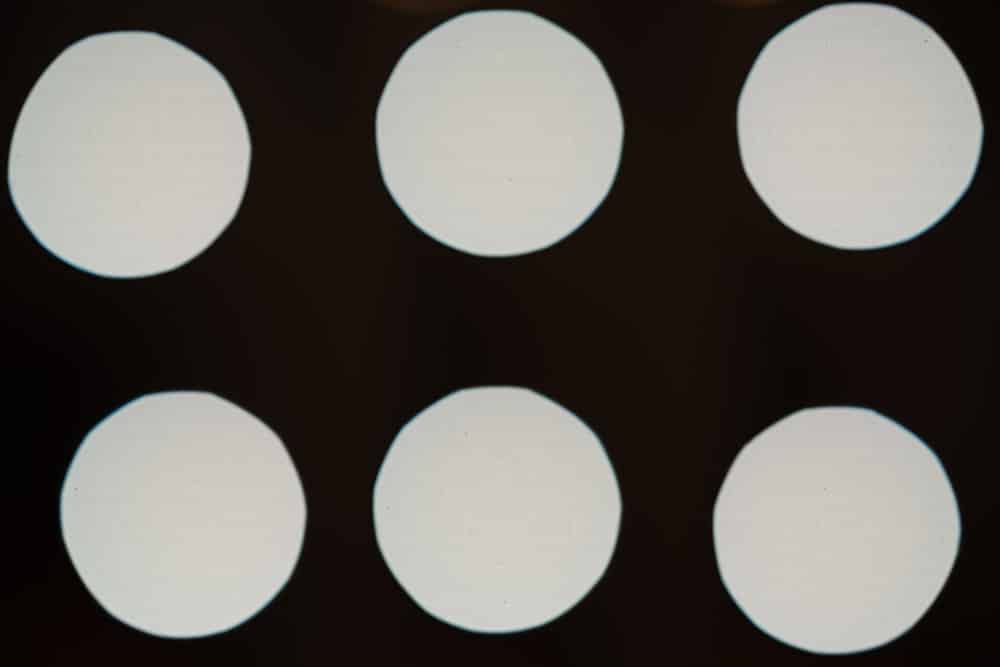
There is no onion ring bokeh. The flatness of the illumination within the circles of confusion is almost ideal.
Not surprisingly, images made wide open look very good:
It’s been a privilege to be able to work with such a capable optic. However, I’m not lining up to purchase one for my own use. I might rent one if I had a project that needed its unique capabilities. If I were into wide-field astrophotography, I’d definitely be interested in owning one.
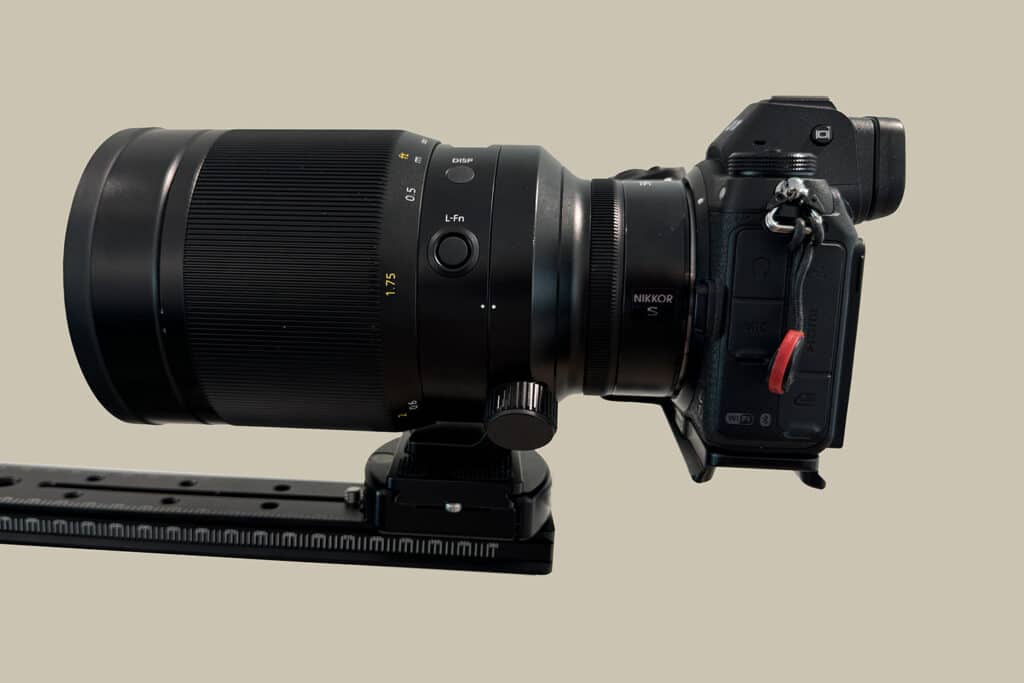
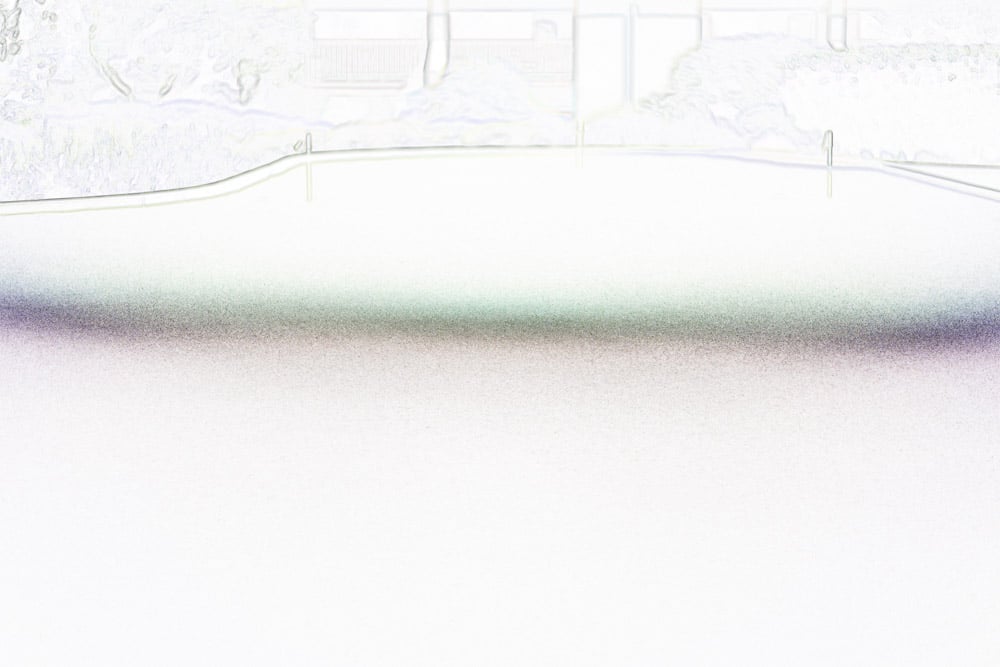




Rawiri says
If this is a statement lens to demonstrate what Nikon are capable of when designing the fastest 58mm lens for a mirrorless system, and they have to double the weight AND the price of the 55mm Zeiss Otus, which is a 12 years old DSLR lens, I frankly don’t see the achievement.
With Cosina Voigtländer offering absolutely superb 35 and 50mm f/2 APO lenses that weigh 1/3 of the Otus 55mm, and cost 1/8 the price of the Nikon NOCT, you start to wonder what Nikon and Zeiss are up to these days.
Needless to say, I would like to see the Cosina Voigtländer 35, 50 and 110mm Apo Lanthar lenses, for actual real-world use, tested here as well as benched for MTF charts over at LensRentals. The same goes for Cosina Voigtländer’s compact 21mm f/1.4 Nokton.
Cheers!
Jim Stirling says
The Nikon z50m F/1.8 is giving Otus level image quality at a fraction of the price . Alas for our wallets at the extremes { and a lens giving the performance of the Noct at F/0.95 is about as extreme as it gets } prices and weight take a hit
https://blog.kasson.com/nikon-z6-7/nikon-50-1-8-s-otus-55-on-z7-zony-55-on-a7riii/
Rawiri says
Instead of trying to disentagle the various caveats of the comparison between these 3 lenses made by Jim, (Nikon 50/1.8 S, Otus 55 on Z7; Zony 55 on a7RIII), I would simply refer to LensRentals’ MTF measurements of the Nikon 50mm f/1,8 (https://www.lensrentals.com/blog/2019/04/just-mtf-charts-nikon-prime-lenses/) and the Otus 55mm f/1.4 (https://www.lensrentals.com/blog/2019/03/just-mtf-charts-zeiss-slr-lenses/), as well as to the MTF measurements provided by both Nikon (https://imaging.nikon.com/imaging/lineup/lens/z-mount/z_50mmf18s/) and Zeiss (https://www.zeiss.com/content/dam/consumer-products/downloads/photography/datasheets/en/otus-lenses/datasheet-zeiss-otus-1455.pdf).
I believe LensRentals’ MTF charts can clearly put your assertion that “the Nikon z50m F/1.8 is giving Otus level image quality” into objective perspective, as well as offer significant insight as to how reliable the MTF charts provided by these two manufacturers really is.
There is one relevant observation to be made by comparing LensRentals’ MTF measurements to those of Nikon and Zeiss, which is that LensRentals’ MTF charts line up very well with Zeiss’ own MTFs, and that the contrary is true with respect to Nikon’s MTF charts. We know that Zeiss’ MTF charts are correctly and sufficiently specified, and made on actual lenses, while Nikon fails to correctly and sufficiently specify their MTF tests, and to specify whether they are computed MTF charts from a model, or performed on actual lenses.
Another aspect that LensRentals’ MTF charts addresses is copy variation, as they try to test 10 copies of each lens. We can thus at least make the assumption that Zeiss’ quality control is superior to that of the competition, and that this is reflected in the premium price of their lenses. Aside from the fact that Zeiss provides MTF charts performed on actual lenses, they are also derived from testing various lenses, just like LensRentals does.
I think the above referred information is sufficient to refute the assertion that “the Nikon z50m F/1.8 is giving Otus level image quality”. I would suggest reading Lloyd Chamber’s comments on MTF charts provided by Nikon, Canon and Sony, which he justifiedly calls “Fantasy MTFs” and even “bullshit MTFs”. Chambers also provides ingteresting accounts on quality control (https://diglloyd.com/).
Now, with respect to Cosina Voigtländer’s Apo Lanthar lenses, and their respective performance, they also fail to provide correctly and sufficiently specified MTF charts (https://www.cosina.co.jp/voigtlander/en/e-mount/apo-lanthar-50mm-f2-aspherical/). Nevertheless, the japanese manufacturer is the one responsible for making Zeiss’ Otus, Milvus and ZF lenses for Leica M-mount, so it’s ultimately Cosina’s quality control and reliability we are talking about when we speak of Zeiss SLR and Rangefinder lenses. In that regard, and from reading Cosina’s own accounts of the production and testing of their Apo Lanthar 50mm f/2 (https://www.cosina.co.jp/news/vol-4製造担当者/ [apply in-browser translation]), I would be more inclined to trust their MTF charts. If you compare the 30lp/mm of Nikon’s MTF chart with Cosina Voigtländer’s, you can see that the Apo Lanthar even bests Nikon’s quite inaccurate chart. But as the Russian proverb goes: Trust but Verify.
LensRentals could offer the photography community yet another great service by putting Cosina’s 4 Apo Lanthar lenses through the paces of their OLAF test machine.
Cheers!
Ilya says
Dear Rawiri,
you have confused Nikon F 50/1.8G (the lens tested by Lensrentals) with Nikon Z 50/1.8 (the lens to those Nikon MTF you link). Your whole comment is based on flawed premise.
Rawiri says
Indeed I have, Ilya, what a blunder!
Mea Culpa.
Ilya says
In fact, if compare Nikon and Lensrentals MTF for the same lens, F50/1.8G, you can see that they match pretty well:
https://www.lensrentals.com/blog/media/2019/03/AF-S-Nikkor-50mm-f1.8G_MTF_Average.png
vs
https://imaging.nikon.com/imaging/lineup/lens/f-mount/singlefocal/normal/af-s_50mmf_18g/img/pic_002.jpg
In fact, Nikon MTF is even lower that measured Lensrentals MTF.
Ilya says
Comparing an f/0.95 lens with an f/1.4 lens does not make sense at all. Even less so with f/2.0 lens.
Yes, it is double the weight and price of Otus, but it is also 1 stop faster AND optically better. Additionally, no one else has designed and manufactured a better photographic f/0.95 lens, at any weight or price, ever.
JimK says
It is an amazing lens.
Rawiri says
There’s no doubt that the NOCT may be an excellent lens, and that f/0.95, f/1.4 and f/2.0 lenses are not directly comparable at maximum aperture. However, the rationale for my critique is that good engineering must be aimed at real world use and reasonable cost of lenses, just as much as optimal image quality and excellence.
Imagine carrying a set of 3 NOCT lenses -say an additional hypothetical 35mm and 85mm f/0.95 NOCT lenses- for landscape shooting in the field.
I have shot both Otus and Milvus 2-3+ lb lenses in the field on a 2+ lb Nikon D850, handheld and with tripod, and then needed a proper massage, a hot bath and a full weekend for my back to recover from carrying the load of 3-4 lenses of that weight. I would frankly not do it again.
In my book, good engineering and lens design cannot sacrifice real world usability and affordability for the sole achievement of unique qualities or outstanding optical performance. The NOCT may approach or equal Otus level performance in many respects, but at double the weight AND price, I can in all honesty not see this as a reasonable trade-off for 2 extra stops. I can, on the other hand, see the example of the CV 35, 50 and 65mm Apo Lanthar lenses -which together weigh 1.4lb less than the NOCT alone- as a reasonable trade-off, that sacrifices speed for real world use while retaining oustanding image quality and affordable cost to both wallet and back.
The remarkable image quality and characteristics of the NOCT, as well as its price tag, come at too high a cost for real world practical usability and affordabilithy and, to me, from that perspective, just doesn’t represent an engineering feat.
JimK says
I think there are applications for which the Noct is very well suited. I’d buy one if I were seriously interested in medium-wide-field astrophotography.
JimK says
I’ll bet you’re not a fan of the Rodenstock HR Digaron-SW 138 mm f/6,5.
Rawiri says
My critique was aimed at the 2kg and $8,000 USD Nikon NOCT for mirrorless cameras, purported to present an advantge in weight and size, and arguably price. My critique does not dismiss the unique image quality or technical performance of the NOCT. The critique is directed at the NOCT’s real world usability, that is size and weight, and its price, relative affordability.
If we assume the purported advantages of mirrorless camera and lens systems as criteria, then the NOCT evidently fails.
The Rodenstock HR Digaron -SW float 138mm f/6.5 is of course not a lens for 35mm full frame mirrorless cameras, and belongs in different format of digital photography, with its own usability and price universe. It is on paper the highest performing lens in Rodenstock’s current line-up (https://www.rodenstock-photo.com/sites/default/files/2021-06/HR%20Dig-SW%20float%20138%20mm%20f6.5%20Datenblatt%20English_2021-06_FINAL_web.pdf), and promises superb image quality.
I personally don’t shoot medium format, let alone large format, and could not justify the expense. Both in the sense of explaining it to my wife, and in the sense of a difference in image quality so substantial as to be worth that extra cost, weight and hassle. This lens sells for north of $13,000 USD, depending on the camera system you chose to go with, and that’s excluding a camera, tripod, other lenses, etc., and is hence not for every photographer. I can be a fan of this lens in the same way I could be a fan of a maserati. Yes, it’s a great lens that surely offers top performance on digital medium format, but not an realistic option for me.
I would appreciate if you could point me to some photographs made with this lens, so we could get a sense of what it delivers. That would certainly give me a tangible motive to become a fan of it.
Cheers!
JimK says
I have not seen claims that MILC lenses are cheaper than DSLR lenses for the same format size. Who is making that claim? On what is it based?
Rawiri says
I recall years ago, many enthusiasts about the back then relatively new compact mirrorless camera systems, who assumed that precisely due to the radical reduction in size (which was never that radical), prices would also come down. That is however not the point I wanted to make, but simply refer the comparatively lower price of full frame vs medium format. Both are of course mirrorless, so a poorly formulated sentence on my part, and of course this difference doesn’t apply to a luxury brand like Leica.
If I were to consider the jump to a 100+MP medium format system, I would however consider precisely a lens like the Rodenstock HR Digaron-SW float 138mm f/6.5, as it is that kind of optical performance that will make the real qualitative difference visible.
In the fuji or Hasselblad systems, not all the lenses deliver this level of performance, and a visible image quality advantage over full frame would easily go lost to diffraction.
https://diglloyd.com/blog/2024/20240414_1000-SonyA7R_VI-100-megapixels.html
Cheers!
JimK says
The GF lenses, taken as a group, outresolve the GFX 100 MP sensors by quite a lot, used optimally. I have two Rodenstock HR Digarons. They are both better than the closest GF lenses, but those differences rarely affect normal photography, and are mostly far off axis.
Rawiri says
I’m sure most of the GF lenses can resolve 100MP, but the question ultimately posed by the above mentioned blog entry from diglloyd.com, is how much do you get to you keep after the taxing of diffraction, field curvature, distortion correction, etc?
When lenses don’t deliver, and the visible gains are marginal at best or simply none, it’s hard to argue for the extra cost, size and weight of medium format.
Here are a few other entries from diglloyd.com that touch on this topic.
https://diglloyd.com/blog/2024/20240710_0738-HasselbladX2D-HasselbladXCD25f2_5V-MediumFormat-vs-35mm.html
https://diglloyd.com/blog/2024/20240711_1704-HasselbladX2D-HasselbladXCD25f2_5V-SonyA7R_V-SonyFE12-24f2_8GM-PatriarchGrove.html
https://diglloyd.com/blog/2023/20230703_1512-FujifilmGFX100S-FujifilmGF-35_70-compare-SonyA7R_V-VoigtlanderFE50f2-HiltonCreekArea.html
Cheers!
JimK says
In my testing, the loss in resolution from GF lens distortion correction is minimal.
https://blog.kasson.com/gfx-50s/iq-effects-of-fuji-234-distortion-corrections/
JimK says
I’m saying more than that. I’m saying that the GFX 100x sensor can’t properly resolve the detail the GF lenses, near the lens axis and at near their optimal apertures, can lay down.